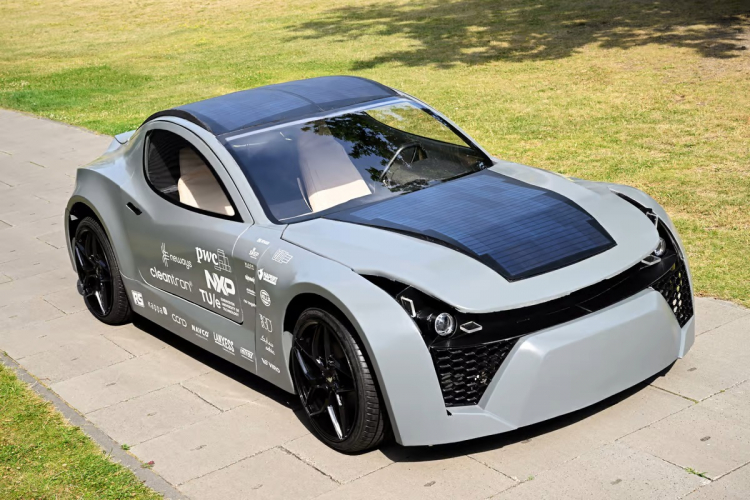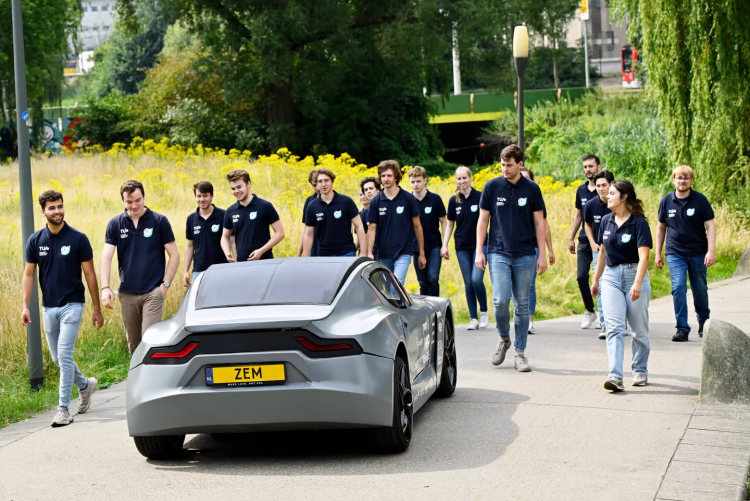
A team from the Technical University of Eindhoven (Netherlands) built a prototype of a passenger electric car, which not only does not cause significant damage to the environment, but also absorbs carbon dioxide from the atmosphere directly during the trip. The authors estimate that the car will absorb more gas than is released during its life cycle.
The Zem team (EM-07) created monocoques and body panels using additive manufacturing technologies to reduce material loss during construction and emit ‘as little carbon dioxide as possible’ using recycled plastic, the remainder of which can be used in other projects .
Recycled plastic is also used in the interior, along with eco-friendly materials such as the so-called ‘Pineapple leather’ is an alternative to real leather made from the cellulose fibers of pineapple leaves. Instead of glass, the windows are made of polycarbonate, which the team claims is less harmful to the environment. The modular infotainment system, modular electronics and modular lighting can be removed and used in other products if needed.

During the trip, the Zem electric car does not emit carbon dioxide. It is known that nine traction batteries with a capacity of 2.3 kWh are installed in the car, a 22 kW engine is used, as well as an old differential from Audi with a relatively high gear ratio. It is also known that a regenerative braking system is used, which allows you to ‘squeeze’ a little more energy from the batteries during operation. Solar power elements are integrated into a number of surfaces. In addition, a bidirectional charging system and ‘digital mirrors’ are used to reduce air resistance on the road.
The visible part of the cleaning system looks like a standard radiator grille. In fact, air is captured through it to clean it. According to the developers, every 20,600 km of mileage at a speed of about 60 km/h removes about 2 kg of carbon dioxide from the atmosphere. Although a single machine will have little effect on the atmosphere, with the mass application of the technology, the contribution to the decarbonization of the planet can be quite real.
The Zem filter is filled to the brim after 320 km of the road – such filters can be cleaned using green energy, and the captured CO2 will be poured into cylinders at charging stations. True, it is not yet known what to do next with carbon dioxide, but some ‘green’ projects allow it to be used in industry and even to create environmentally sustainable fuels and plastics.
So far, the project is only a proof of concept, but in the future it is planned to increase the cleaning capacity of the filter. After the end of the electric vehicle’s life cycle, it is planned to use its components as efficiently as possible. In August, members of the Zem team will go on a special tour of universities and manufacturing companies in the United States in an attempt to use their example to make them accept the challenge and engage in the development of similar solutions.

